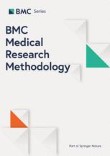BMC Med Res Methodol.2021 Oct 9;21(1):206. doi: 10.1186/s12874-021-01405-8.
h
Effects of different invitation strategies on participation in a cohort study of Iranian public sector employees: a cluster randomized trial
Authors
Affiliations
Abstract
Background: Identifying strategies to optimize participation in health studies is one of the major concerns for researchers. The purpose of this study was to evaluate the efficiency of different invitation strategies on participation rate in the Employees’ Health Cohort Study of Iran (EHCSIR).
Methods: Two cluster-randomized trials were carried out to assess the outcomes of different invitation strategies. In the first phase, 7 units with 1880 employees (3 hospitals, 3 health centers, and 1 office) were assigned to the three parallel modes of invitation: 1) invitation letter, 2) phone call and 3) Short Message Service (SMS). In the second phase, 6 hospitals with 1633 employees were allocated to two invitation methods: 1) invitation letter, 2) invitation letter plus EHCSIR project introduction video. All groups were followed up by phone calls. A logistic mixed-effects model was used to compare the effectiveness of the strategies. The cost-effectiveness of the interventions was also compared.
Results: In the first phase, the participation rates in the invitation letter, phone call, and SMS groups were 27.04% (182/673), 21.55% (131/608), and 22.54% (135/599), respectively. Using an invitation letter was significantly more successful than SMS (Adjusted Odds Ratio = 1.80, 95% CI =1.14 to 2.85). Average Cost-Effectiveness Ratios (ACER) were $1.37, $1.42, and $1.55 for the invitation letter, phone call, and SMS, respectively. In the second phase, adding a project introduction video to the invitation letter did not significantly influence the participation rate (Adjusted OR = 0.58, 95% CI =0.24 to 1.36). The ACER was $1.21 for the invitation letter only and $2.01 for the invitation letter plus the introduction video.
Conclusions: In comparison with the phone call and SMS, the invitation letter is the most effective invitation method for public sector employees to participate in a cohort study. Sending an introduction video did not significantly increase the participation rate compared to sending an invitation letter only.
Keywords: Cohort; Invitation; Participation rate; Recruitment; Response rate.
How to Cite
Rajabzadeh R, Janani L, Motevalian SA. Effects of different invitation strategies on participation in a cohort study of Iranian public sector employees: a cluster randomized trial. BMC Med Res Methodol. 2021 Oct 9;21(1):206. doi: 10.1186/s12874-021-01405-8. PMID: 34627145; PMCID: PMC8502307.

